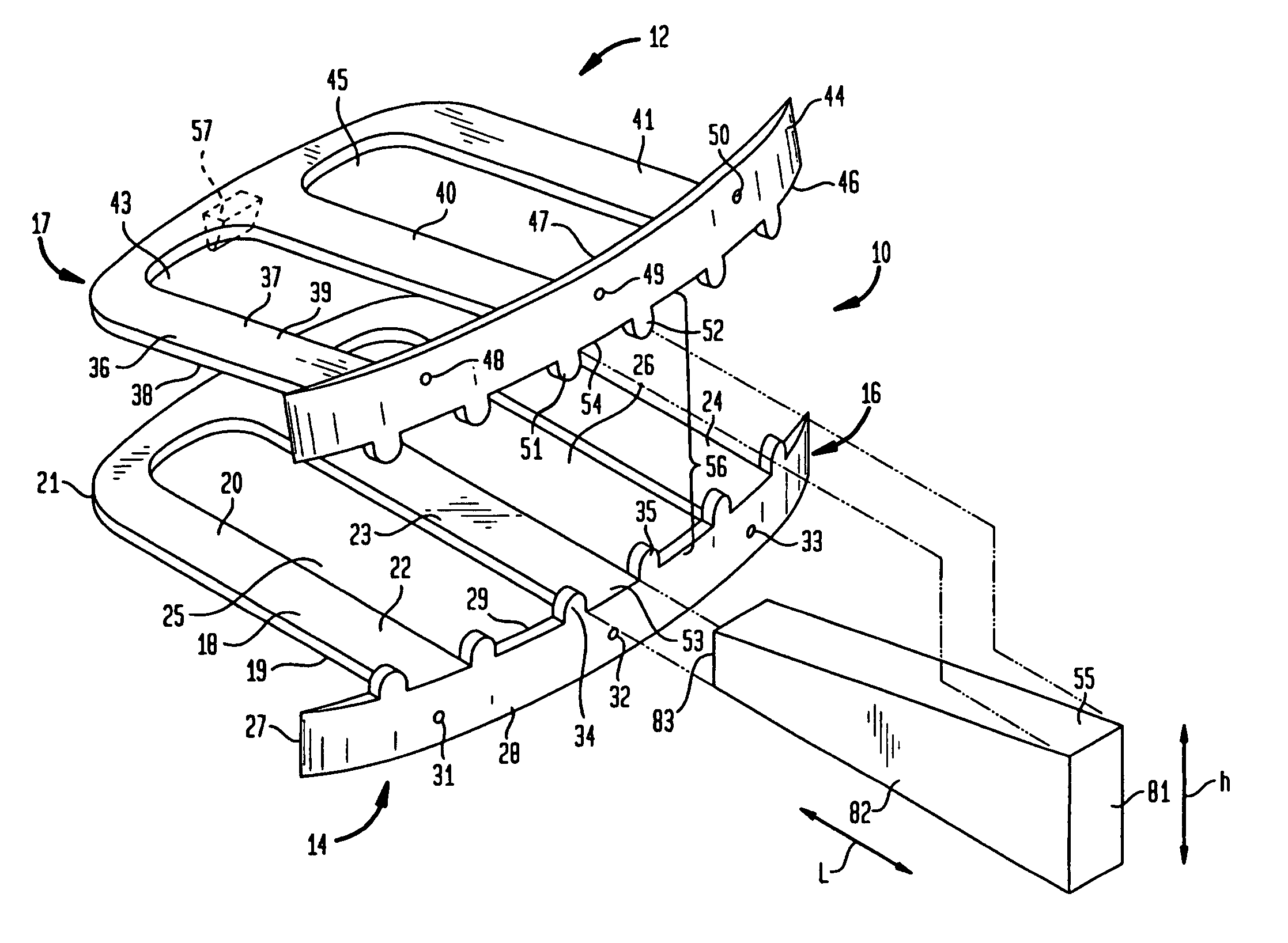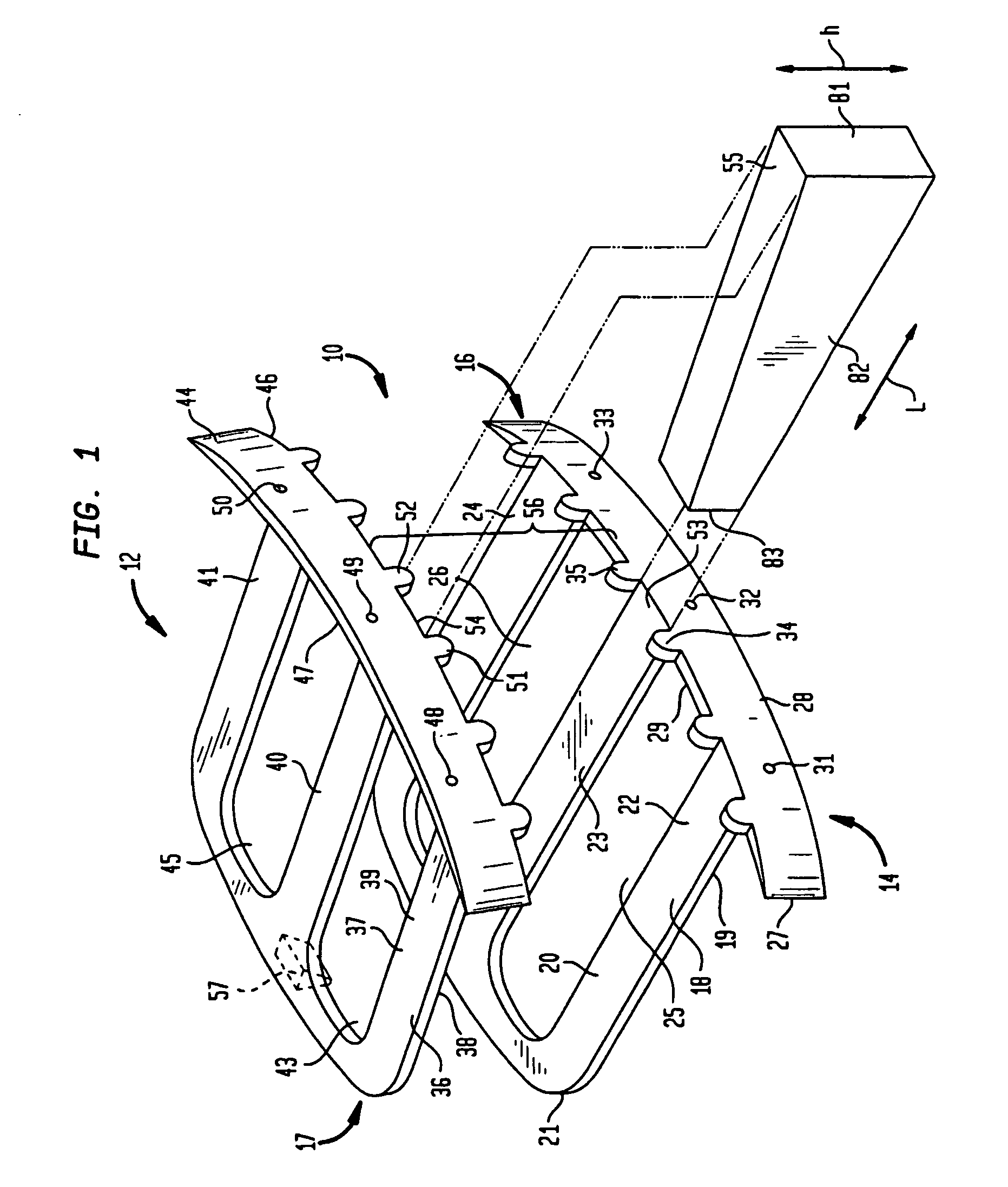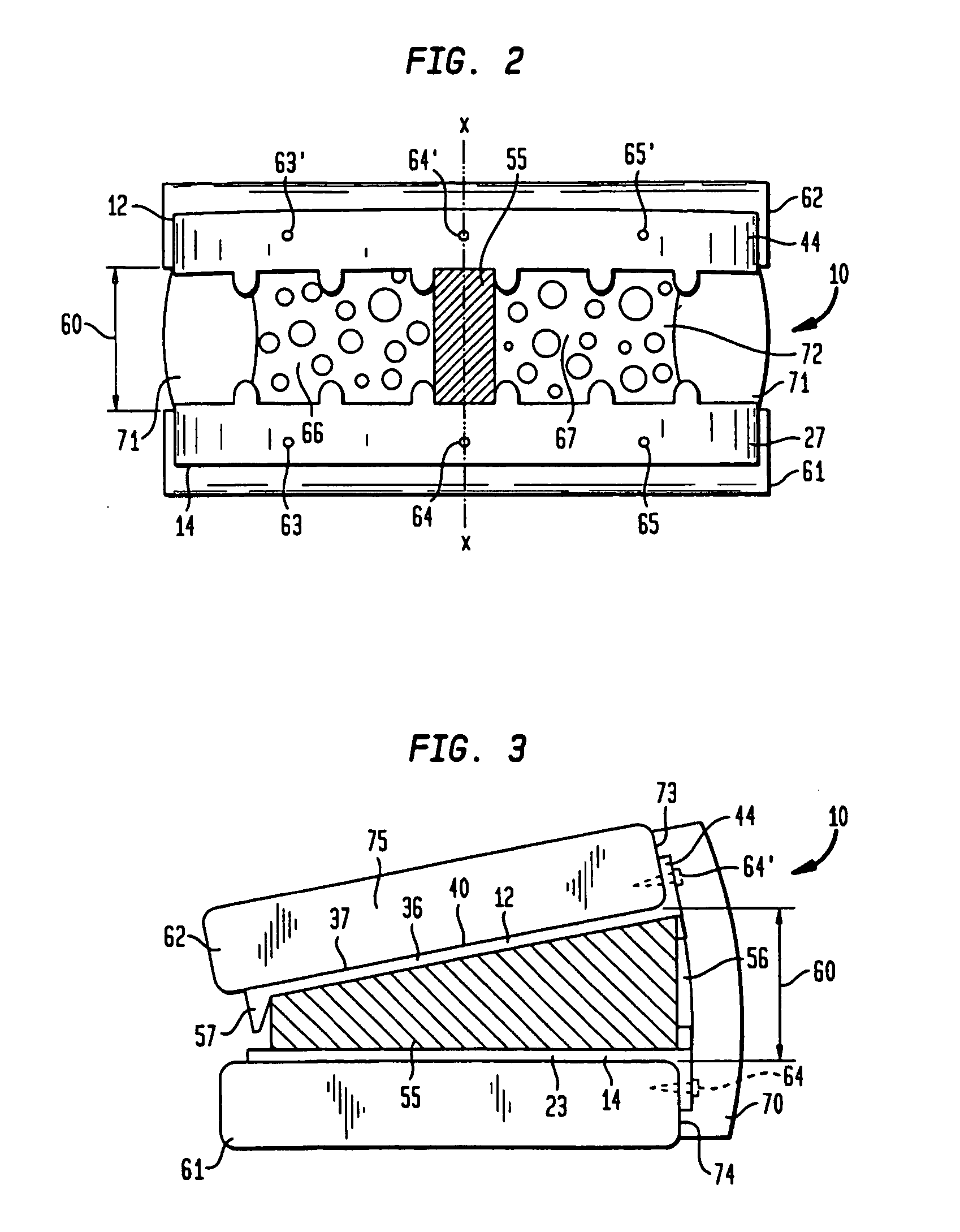Interbody spinal fusion device
a spinal fusion and intervertebral disc technology, applied in the field of spinal implant system, can solve the problems of increased risk of degeneration of other intervertebral discs, inability to maintain the normal lordosis of the spine, and back pain, and achieve the effect of facilitating bone fusion and maintaining the respective vertebra
- Summary
- Abstract
- Description
- Claims
- Application Information
AI Technical Summary
Benefits of technology
Problems solved by technology
Method used
Image
Examples
Embodiment Construction
[0027]FIG. 1 is a perspective view of the interbody spinal fusion device 10. Interbody spinal fusion device 10, suitable for implantation in the intervertebral space between two adjacent vertebral bodies (not shown), has a pair of bone-engaging plate members, specifically top plate member 12 and bottom plate member 14. In use, top plate member 12 and bottom plate member 14 are arranged above and below each other, respectively, in spaced apart relationship. The spaced apart relationship is created and maintained in a manner that will be described more completely hereinbelow.
[0028] Bottom plate member 14 has a bottom support plate 18 that is adapted to rest on the endplate of the lower vertebra (not shown). Bottom support plate 18 has an outer surface 19 that contacts the lower vertebra and an inner surface 20. As shown in this figure, bottom support plate 18 is generally flat, but may be adapted to follow the contour of the vertebra on which it rests. Since the support plates merely...
PUM
 Login to View More
Login to View More Abstract
Description
Claims
Application Information
 Login to View More
Login to View More - R&D
- Intellectual Property
- Life Sciences
- Materials
- Tech Scout
- Unparalleled Data Quality
- Higher Quality Content
- 60% Fewer Hallucinations
Browse by: Latest US Patents, China's latest patents, Technical Efficacy Thesaurus, Application Domain, Technology Topic, Popular Technical Reports.
© 2025 PatSnap. All rights reserved.Legal|Privacy policy|Modern Slavery Act Transparency Statement|Sitemap|About US| Contact US: help@patsnap.com



